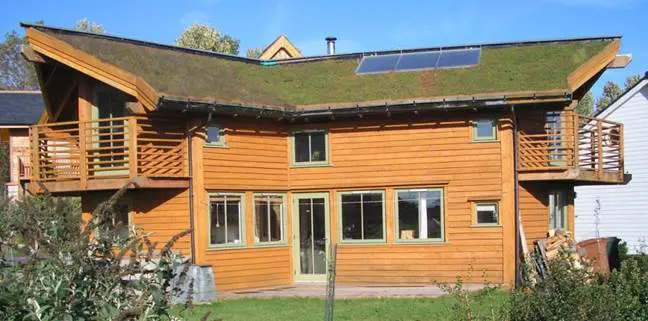Is there anything more romantic than building your own home? DCLG certainly didn’t miss the opportunity to promote this concept on Valentine’s Day, by reminding aspiring self and custom housebuilders of new rules coming into force and recently published draft planning guidance taking effect on 1 April 2016, which will see the launch of various measures (including new registers) to support prospective self-builders looking for plots – supposedly making it easier for them to get their dream home underway.
I’m currently working on a scheme in County Durham for 14 self-build plots. Shortly after distributing invitations to a consultation event we received four enquiries from local residents who were determined to buy a plot. It’s clear to me that there is a strong demand for self-build.
The statutory duties under the Self-build and Custom Housebuilding Act 2015 require local planning authorities (LPAs) to keep a register of self and custom-builders for their area from 1 April 2016. Local people will be able to add their names to the register to make it clear they are seeking to acquire a serviced plot of land in order to build their own home.
The draft guidance (that will be added to the national Planning Practice Guidance – ‘the PPG’ – on 1 April) states that,
"registers that relate to their [LPA] area may be a material consideration in decision-taking" and that LPAs with plan-making functions,
"should use their evidence on demand for this form of housing from the registers that relate to their area in developing their local plan and associated documents”.In light of recent research showing that more than half the population would like to build their own home at some stage in their lives
[1] and that 1 million people are currently taking action to build their home in the next 12 months
[2], Housing Minister Brandon Lewis’ ambitious target to build 20,000 self and custom-built homes a year by 2020 appears all the more achievable. But how will this demand translate into delivery on the ground, especially when viewed in the context of easing the country's housing shortage?
Paragraph 159 of the National Planning Policy Framework (NPPF) requires LPAs to prepare a Strategic Housing Market Assessment (SHMA) to assess their full housing needs, including
inter alia, catering for housing demand and the scale of housing supply necessary to meet this demand. The new draft guidance encourages LPAs to feed the demand data from the self-build and custom housebuilding registers in their area into their SHMA and consider future need for these types of housing when developing their local plans.
However, it could be argued that the registers will create a false impression of demand because theoretically, anyone could apply to be on a register even if they have no realistic means to build their own home. In response, the draft guidance encourages relevant authorities to request additional information from applicants to support a better and more accurate understanding of the nature of demand in their areas, but applicants have no obligation to provide this information. As long as the applicant meets the eligibility criteria – any European Economic Area citizen aged over 18 seeking to acquire a serviced plot of land for a house that would be their sole or main residence – they have to be accounted for on the register, even if they have no interest in providing additional information to facilitate the LPA’s understanding of demand.
In addition, some have called for a small application fee to be required, for entry onto the register to help cover the administration costs incurred by LPAs and as a means of ‘filtering out’ those not committed to building their own home. However, this measure has not been included in the Act.
In light of the above, we are expecting to see large numbers of local people adding their names to registers up and down the country. This could illustrate huge demand for self-build and custom housebuilding influencing both plan-making and the decision-taking functions of LPAs. However, due to the relatively relaxed eligibility criteria and the absence of any test to determine whether people actually have the means to build their home, it will be difficult to accurately quantify the nature of demand and future potential for self-build and custom housebuilding.
In principle, the inclusion of registers will be a useful mechanism for gauging local demand for self-build and custom housebuilding. However, on the basis of the above coupled with the lack of measures to prevent people from signing up to registers in numerous authorities – invariably inflating demand further – LPAs should err on the side of caution when using the demand data to inform their SHMAs.
Ultimately, it will be interesting to see whether the registers capture ‘new’ demand which was previously unaccounted for or will they largely represent alternative demand which already exists for housebuilder products?...



